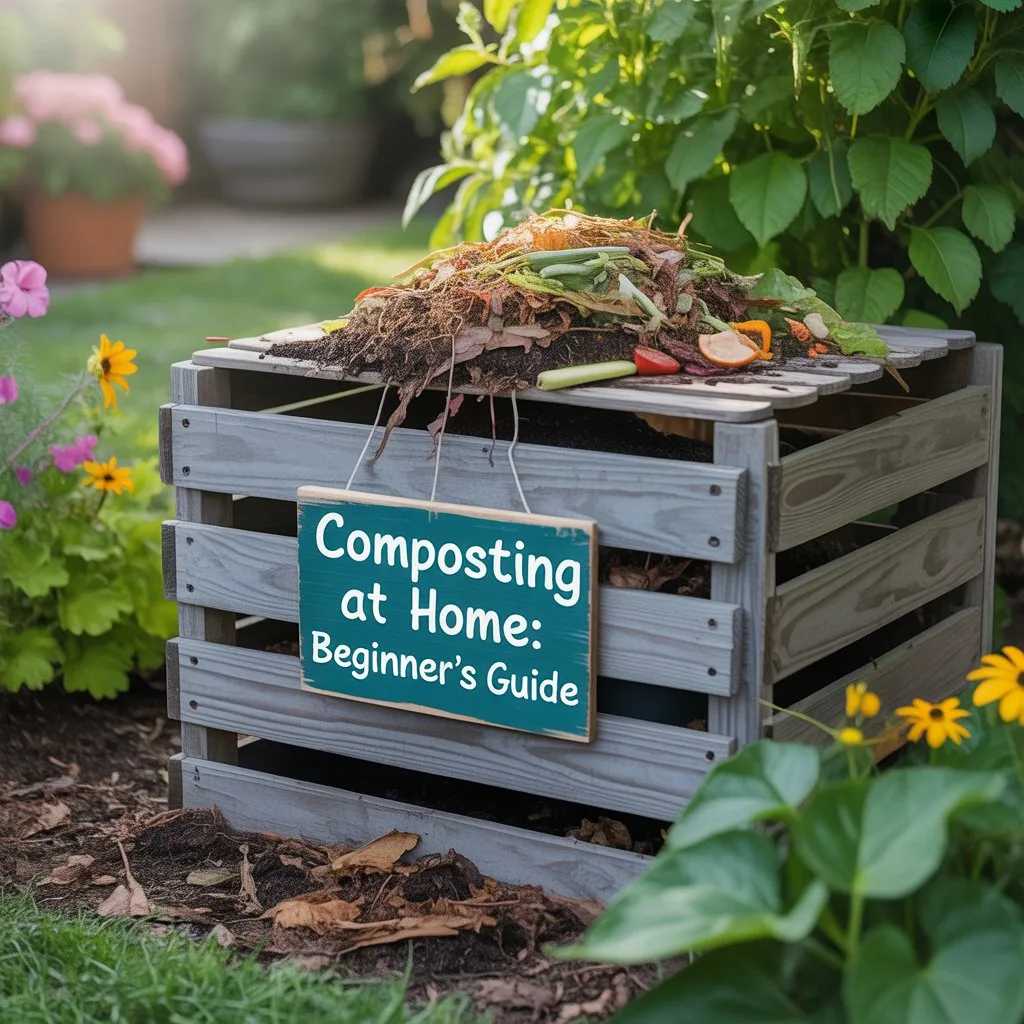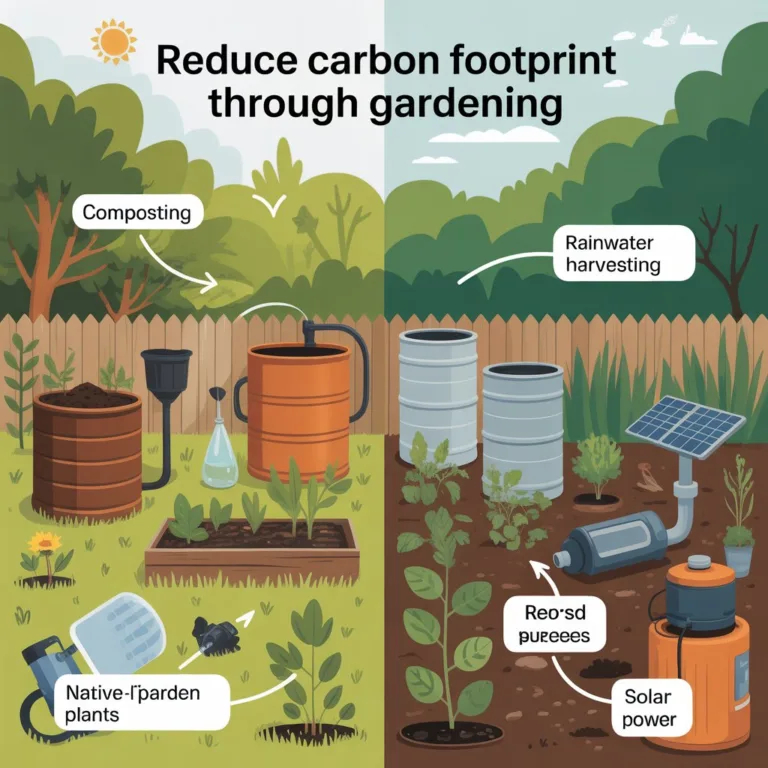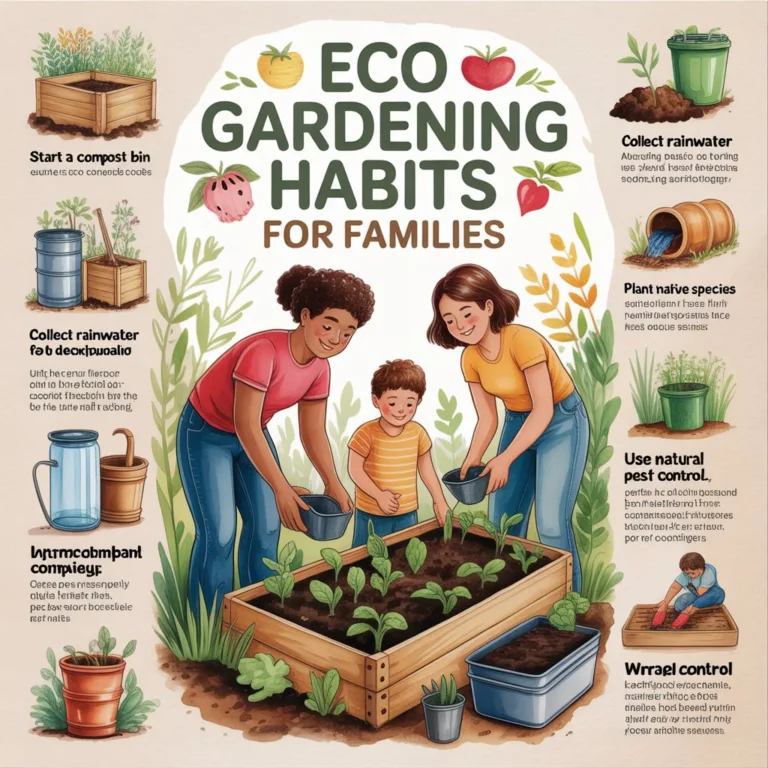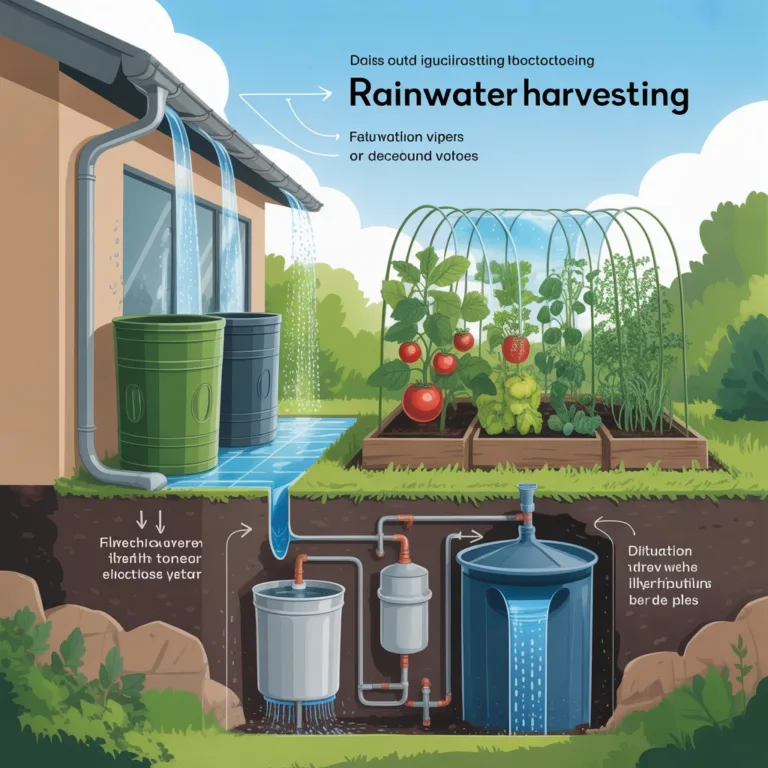Composting is one of the most effective and rewarding ways to live sustainably. By turning kitchen scraps and yard waste into nutrient-rich soil, you reduce household waste, support plant health, and contribute to a cleaner environment. Whether you live in a house with a backyard or an apartment with a balcony, composting is accessible to everyone. It’s a small daily habit that makes a big difference.

What Is Composting and Why It Matters
Composting is a natural process in which organic materials such as food scraps, leaves, and grass decompose into a rich, dark substance called humus. This material is full of nutrients that enrich the soil, helping plants grow strong and healthy.
When organic waste is thrown away, it ends up in landfills, where it decomposes without oxygen and releases methane, a greenhouse gas far more potent than carbon dioxide. Composting diverts this waste from landfills, reducing methane emissions and creating something beneficial instead of harmful.
Beyond its environmental benefits, composting also encourages mindfulness about what we consume and throw away. It helps us see value in what would otherwise be considered trash and promotes a more circular lifestyle—one where waste becomes a resource.
Benefits of Composting at Home
Composting is more than a gardening activity—it’s an act of sustainability. Here are several ways it improves your home and environment:
1. Reduces Waste Volume
Up to 40% of household waste can be composted. By separating organic matter from regular trash, you’ll notice smaller garbage bags, fewer unpleasant odors, and less reliance on waste collection.
2. Produces Natural Fertilizer
Compost is often called “black gold” by gardeners. It enriches soil with essential nutrients such as nitrogen, phosphorus, and potassium, enhancing plant growth without synthetic fertilizers.
3. Improves Soil Structure
Adding compost improves the texture of both sandy and clay-heavy soils. It helps sandy soil retain water and allows clay soil to drain better, creating an ideal environment for plant roots.
4. Supports Microbial Life
Healthy compost is teeming with beneficial microorganisms that promote healthy plant growth and suppress certain plant diseases.
5. Saves Money
By creating your own compost, you spend less on fertilizers, soil conditioners, and waste disposal.
6. Connects You with Nature
Composting reminds us of the natural cycle of life and decay. It fosters patience and appreciation for how nature reuses everything.
Choosing the Right Composting Method
There’s no single “best” composting method. The right one depends on your space, lifestyle, and the amount of waste you produce.
Outdoor Compost Bin
If you have a backyard or garden, an outdoor bin or heap is ideal. You can use a commercial compost bin or make your own from wood pallets or wire mesh.
Tumbler Composters
These enclosed, rotating bins make composting faster and easier to manage. Tumblers are great for reducing odor and keeping pests away, perfect for those who prefer low-maintenance composting.
Vermicomposting (Worm Composting)
For apartment dwellers or those without outdoor space, vermicomposting is a great option. It uses red worms (Eisenia fetida) to break down food scraps into nutrient-rich compost called worm castings.
Bokashi Composting
Originating from Japan, this method uses beneficial microorganisms to ferment food waste—including meat and dairy—inside an airtight bucket. After fermentation, the material can be buried in soil to complete the composting process.
Setting Up Your Composting System
Starting your compost pile or bin doesn’t require much equipment. You’ll only need a few materials and a little understanding of how to balance your compost ingredients.
Choose the Right Location
Select a dry, shaded spot close to a water source. If you’re composting outdoors, make sure the bin has good drainage.
Layer Your Materials
A successful compost pile needs a balance between two types of materials:
- Greens: nitrogen-rich materials such as fruit and vegetable scraps, coffee grounds, tea leaves, and grass clippings.
- Browns: carbon-rich materials such as dried leaves, cardboard, paper, wood chips, and straw.
Start with a layer of browns to provide airflow, then add greens and alternate between them. Ideally, your compost should have about three parts browns to one part greens.
Keep It Moist
Compost should feel like a damp sponge—not too dry and not too wet. If it’s too dry, sprinkle some water. If it’s too wet, add more brown materials to absorb excess moisture.
Aerate Regularly
Composting requires oxygen for the microorganisms to break down the materials. Turn or mix your compost pile every 7–10 days to maintain proper airflow and prevent odors.
Monitor the Temperature
A healthy compost pile warms up as decomposition occurs. The ideal internal temperature ranges from 130°F to 160°F (55°C to 70°C). If it cools too quickly, it may need more green materials or moisture.
What You Can and Cannot Compost
Knowing what goes into your compost is crucial for maintaining balance and preventing pests or bad smells.
Compost-Friendly Materials:
- Fruit and vegetable peels, cores, and scraps
- Coffee grounds and paper filters
- Tea leaves and tea bags (without plastic mesh)
- Crushed eggshells
- Grass clippings and leaves
- Paper napkins and cardboard (shredded)
- Sawdust and wood shavings (untreated wood)
Avoid Composting:
- Meat, fish, or bones (can attract pests)
- Dairy products and oily foods
- Pet waste or diapers
- Synthetic materials or plastics
- Diseased plants or seeds
- Coal or charcoal ash
By following these guidelines, your compost will remain balanced, odor-free, and full of nutrients.
Common Composting Problems and How to Fix Them
Even the best compost piles sometimes encounter issues. Thankfully, most problems have simple solutions.
Bad Smell
A strong odor often means your compost is too wet or lacks enough brown material. Mix in dry leaves, shredded paper, or sawdust and aerate the pile.
Too Dry or Not Decomposing
If your compost isn’t breaking down, it might be too dry or lack nitrogen. Add water and more green materials such as fruit scraps or coffee grounds.
Pests or Flies
Avoid leaving food scraps exposed. Always bury new waste under a layer of browns and cover your bin. A well-balanced compost doesn’t attract pests.
Compost Too Wet or Slimy
Add dry, absorbent materials and turn the pile regularly to restore balance.
Mold or Fungus Growth
A little white mold is normal—it’s part of decomposition. However, if it spreads excessively, your compost might need more airflow. Turn it more often.
How Long Does Compost Take to Be Ready?
The composting process can take anywhere from two months to a year, depending on temperature, materials, and maintenance. Active, well-aerated compost piles can finish in 8–12 weeks. Passive piles that aren’t turned often will take longer.
You’ll know your compost is ready when it looks dark, crumbly, and earthy, with no recognizable scraps. At this stage, it’s rich in nutrients and safe to use on your plants.
How to Use Finished Compost
Once your compost is ready, there are many ways to use it in your home and garden:
Garden Soil Enrichment
Mix compost into garden beds to boost soil fertility. It improves structure, moisture retention, and overall plant health.
Potted Plants and Containers
Blend one part compost with two parts potting soil to provide plants with steady nutrients.
Lawn Top Dressing
Spread a thin layer of compost over your lawn to improve soil quality and encourage healthy grass growth.
Mulch Alternative
Use compost as mulch around trees, shrubs, and flowers to retain moisture and suppress weeds.
Seed Starting
When mixed with coconut coir or peat-free mixes, compost provides a great base for seedlings.
Teaching Kids About Composting
Composting offers an excellent opportunity to teach children about nature, science, and responsibility. Encourage them to help collect kitchen scraps, observe the decomposition process, and learn about the creatures that help break down organic matter.
This not only makes them environmentally aware but also inspires curiosity about ecosystems and sustainability. Turning composting into a family project creates long-lasting habits that benefit both people and the planet.
Expanding Composting Beyond the Home
Once you master home composting, consider expanding your efforts:
- Start a community composting group with neighbors or local schools.
- Donate compost to community gardens or local parks.
- Collaborate with restaurants or markets to collect organic waste for large-scale composting.
Community composting builds stronger local connections and amplifies the environmental benefits.
Composting at home transforms waste into life. Each peel, leaf, and coffee ground you compost contributes to a healthier planet and more vibrant gardens. It’s a reminder that sustainability begins with small, consistent actions. Whether you start with a small bin under your sink or a compost pile in the backyard, the results are the same—less waste, richer soil, and a greener world.
Embrace composting today and see how nature rewards your efforts with growth, balance, and renewal. Every handful of compost tells a story of transformation—a story you can start writing right at home.

Sofia Greenfield is a sustainable gardening expert and environmental educator who inspires families and urban gardeners to cultivate green spaces responsibly. She shares practical tips on growing vegetables, herbs, and flowers using eco-friendly and recycled materials, emphasizing the joy of gardening while protecting the planet.



